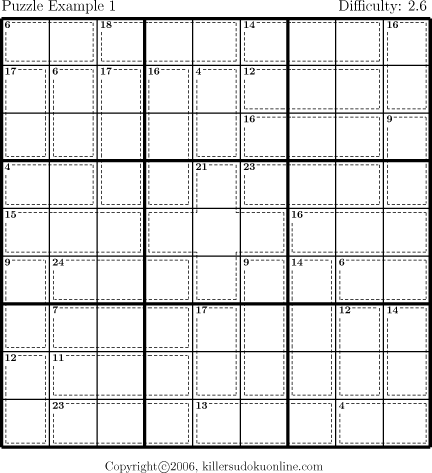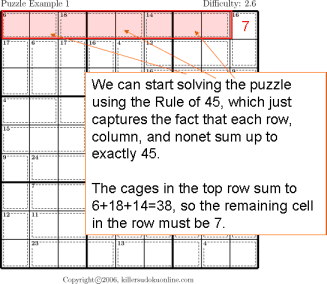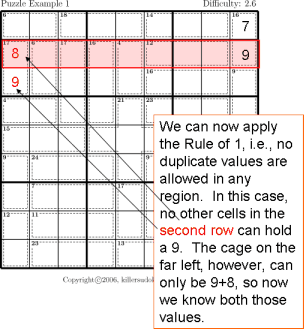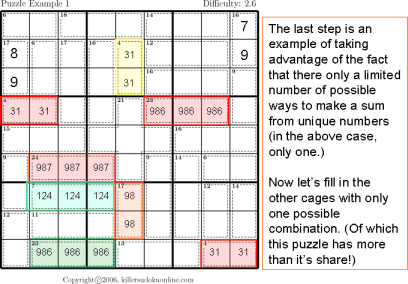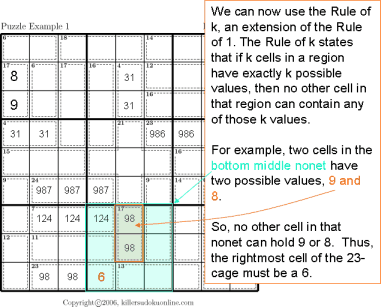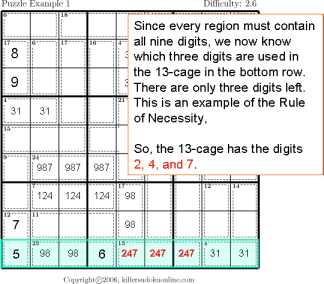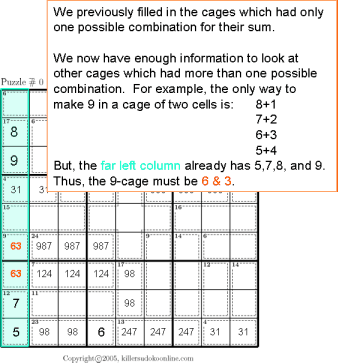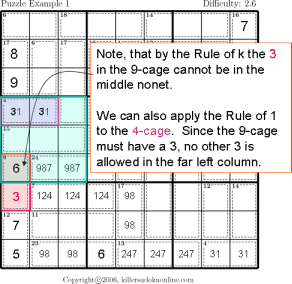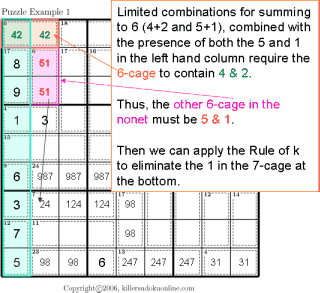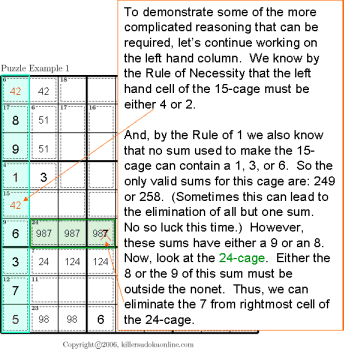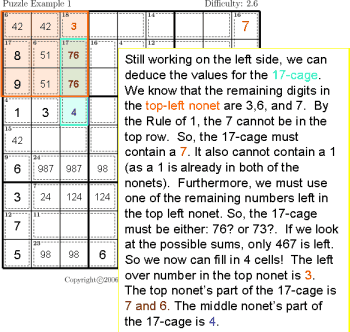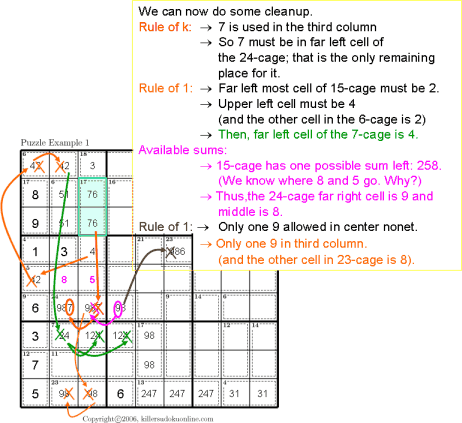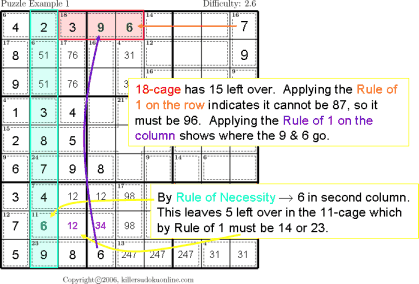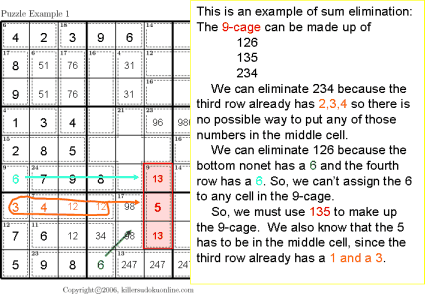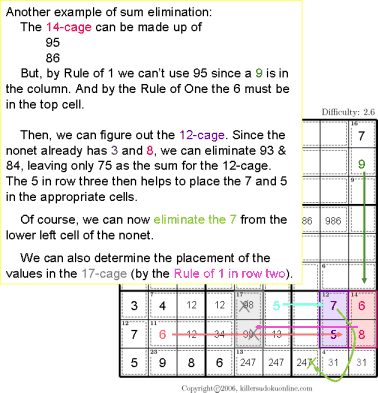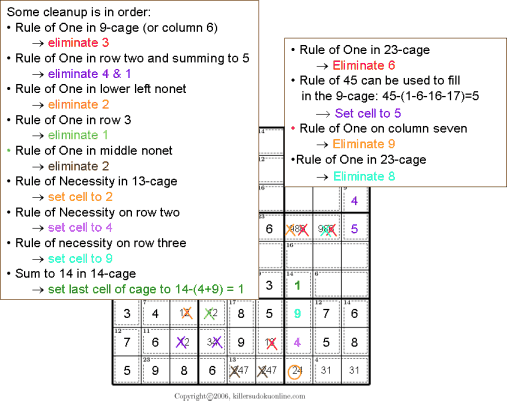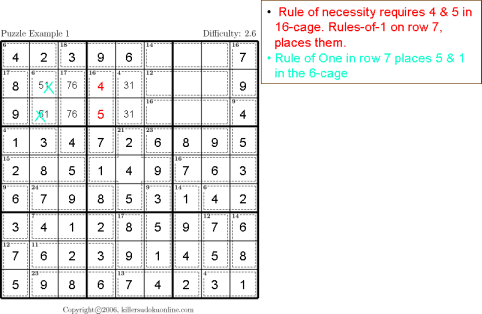
This instructable provides step by step instructions to complete a Sudoku puzzle by simple process of elimination.
One of the things I that drove me crazy about Sudoku is how difficult it is to return to a puzzle if you get interupted. This system allows you to walk away from a puzzle at any time and return exactly where you left off.
One of the things I that drove me crazy about Sudoku is how difficult it is to return to a puzzle if you get interupted. This system allows you to walk away from a puzzle at any time and return exactly where you left off.
Step 1What you need to begin

You need:
1. A sudoku puzzle. I enlarged this one (which was the puzzle that appeared on Sudoku.com on July 8, 2006.) to make photography easier. I find this system works better on larger puzzles.
2. A pencil, Not a pen. A pencil.
3. An eraser
1. A sudoku puzzle. I enlarged this one (which was the puzzle that appeared on Sudoku.com on July 8, 2006.) to make photography easier. I find this system works better on larger puzzles.
2. A pencil, Not a pen. A pencil.
3. An eraser
Step 2Fill in the "Missing Grid"
You see, a Sudoku puzzle is missing a grid. Once you put in this grid, it is sooo much easier.
Enter the numbers 1 through 9 in a "tic-tac-toe" pattern in every blank box.
Step 3Erase "Across"
So the first number (in the upper right corner) is a "6". Erase every other "6" in that row. Once you have completed the erasing, draw a line across the top of the number to indicate that you have cleared out that line
.
Step 4Erase Down
Now, for that same number "6", erase the corresponding "6"'s in every box in the same column. Once you have completed erasing, draw a line down the edge of the number to indicate that you have completed this step
.
.
Step 5Erase "All Around"
Ok, last step for the first number "6" Erase all the "6"s in the same quadrant. Then draw a circle around the number to indicate you have completed this step.
Now you have eliminated all the sixes from all the other blocks. That indicates that a Six canot appear in any of those blocks.
Keep going, repeat those same three steps for all the other pre-printed numbers in the puzzle
Now you have eliminated all the sixes from all the other blocks. That indicates that a Six canot appear in any of those blocks.
Keep going, repeat those same three steps for all the other pre-printed numbers in the puzzle
Step 6Repeat for all the pre-printed numbers
Just repeat thos three steps for each number that was printed in the puzzle. The purpose of the down, across, and circle marks on each number is to provide for any interruption that may occur when solving the puzzle. By drawling those lines you can always tell exactly where you left off. If the number has all three marks, you can be sure that all of the corresponding numbers have been eliminated from the puzzle. YOu can effectively forget about that block now.
Let's see what the result of all that erasing was.
Let's see what the result of all that erasing was.
Step 7Locate Answers

By process of elimination you will have done so much erasing in some blocks that only one number is left. Guess what. THat is the answer for that block. Congratulate yourself.
Write that number large in the block, then treat it like a preprinted number. Eliminate all the across, down and around numbers as you have already done so many times before.
In this image, the red pen points point to all the answers that were provided just by doing the initial erasing.
We have not yet begun to think!
Step 8Other kinds of eliminations.

You won't always be so lucky. Not every time will you end up erasing all the numbers but one in a block. If that is the case, then you peruse the puzzle to find eliminations.
First look down each column. If you find a number that only appears in one block in a column. That is the answer for that block.
In this picture, the pen point points to a three. That is the only three in that column, so that must be where it goes.
Write it large, then treat it like a pre-printed number. See ... this isn't thinking. This is EASY
Step 9Look Around a quadrant.
I know, they aren't really quadrants, but you know what I mean, don't you?
If you've looked across the columns, and across the rows and there are all duplicates, then look in the group. If there is one number in the group that only appears in one block, then it's your answer.
See... There is no guessing in Sudoku. One of these situations has to occur. You just need to find them.
IN this picture the 5 only appears in one block in the group. It goes there.
Write it big, then treat it like a pre-printed number.
See where we're going, here?
If you've looked across the columns, and across the rows and there are all duplicates, then look in the group. If there is one number in the group that only appears in one block, then it's your answer.
See... There is no guessing in Sudoku. One of these situations has to occur. You just need to find them.
IN this picture the 5 only appears in one block in the group. It goes there.
Write it big, then treat it like a pre-printed number.
See where we're going, here?
Step 10Lather, rinse repeat.
Eventually, you will find all those lonely numbers in thier rows, columns or groups.
Remember to draw those lines and circles in case you get interrupted.
Eventually you will solve the puzzle.
Compare our solution to the "Official Solution" found on the Sudoku.com site. See? A perfect match.
And you thought Sudoku was hard.
It's so easy, you don't even have to think!
Remember to draw those lines and circles in case you get interrupted.
Eventually you will solve the puzzle.
Compare our solution to the "Official Solution" found on the Sudoku.com site. See? A perfect match.
And you thought Sudoku was hard.
It's so easy, you don't even have to think!








 11:02 pm
11:02 pm
 Balakumar
Balakumar















